Man-made tunnels are some of the most impressive engineering feats accomplished by humans. In the face of natural obstacles like mountain passes or large bodies of water, tunnels have radically enhanced our ability to transport people and freight across the world.
In this post, we’ll look at the 20 longest tunnels in the world. We’ll see some that have been cleared through miles of solid rock, deep under mountain passes, and others that pass well below the seabed across large bodies of water.
The longest tunnels in this post have been split into two categories: those built for roads, and those that form parts of railways.
While the world’s longest car/railway tunnels are impressive, longer tunnels are being built all the time and are even currently under construction. Since 1980, for example, the longest tunnel in the world has changed five times.
Longest Road Tunnels
| Name | Location | Length | Year |
|---|---|---|---|
| Lærdal Tunnel | Lærdal - Aurland, Norway | 24,510 m (15.2 mi) | 2000 |
| Jinpingshan | Sichuan, China | 17,500 m (10.9 mi) | 2008 |
| Gotthard Road Tunnel | Lepontine Alps, Switzerland | 16,918 m (10.5 mi) | 1980 |
| Arlberg Road Tunnel | Arlberg, Austria | 13,972 m (8.7 mi) | 1978 |
| Mount Erlang Tunnel | Sichuan, China | 13,433 m (8.3 mi) | 2018 |
| Yamate Tunnel | Tokyo, Japan | 18,200 m (11.3 mi) | 2015 |
| Zhongnanshan Tunnel | Shaanxi, China | 18,040 m (11.2 mi) | 2007 |
| Ryfylke Tunnel | Stavanger - Strand, Norway | 14,400 m (8.9 mi) | 2019 |
| Mount Ovit Tunnel | Erzurum Province - Rize Province Turkey | 14,346 m (8.9 mi) | 2018 |
| Xishan Tunnel | Shanxi, China | 13,654 m (8.5 mi) | 2012 |
| Hongtiguan Tunnel | Shanxi, China | 13,122 m (8.2 mi) | 2013 |
Longest Road Tunnels:
1. Lærdal Tunnel
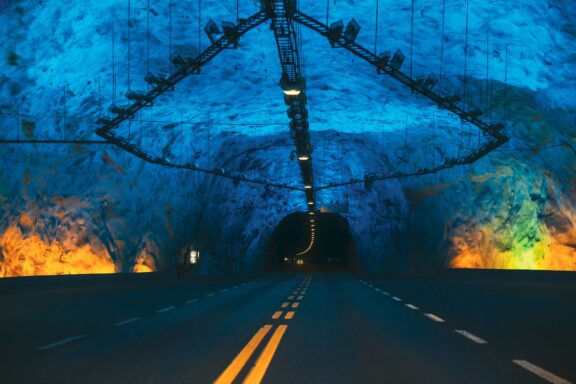
The Lærdal Tunnel in Norway is the longest road tunnel in the world. After five years of construction, it was completed in 2000 and is 24.51 kilometers long. The tunnel connects the Lærdal and Aurland municipalities and avoids the need for ferry connections or difficult mountain crossings during winter.
While there are no emergency exits in the Lærdal Tunnel, it is equipped with many safety precautions such as emergency phones, fire extinguishers, wiring for mobile phones, emergency niches, and turning areas.
2. Jinpingshan Tunnel
The Jinpingshan Tunnel is China’s deepest transportation tunnel. Construction on the tunnel was completed in 2007, and it is located in Sichuan, China. It is used to access the hydroelectric power stations in the Jinping mountains.
3. Gotthard Road Tunnel
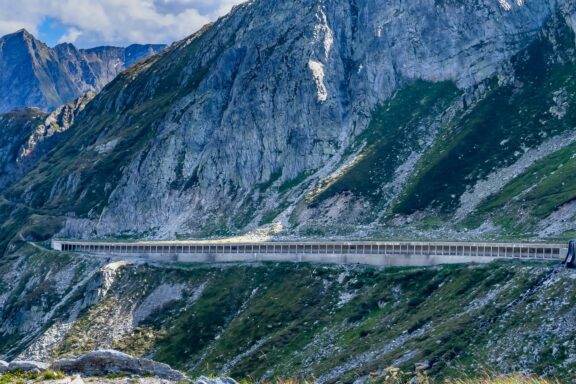
The Gotthard Road Tunnel in Switzerland runs below the Gotthard Pass through the Alps. When construction of the tunnel was completed in 1980, it was the longest tunnel in the world at 16.9 kilometers long, but it is now the fifth longest.
This tunnel is part of the A2 freeway, which runs north-south through the Alps, and it consists of a single bidirectional tube with two lanes. It is one of three tunnels that connect the Swiss Plateau with southern Switzerland.
4. Arlberg Road Tunnel
The Arlberg Road Tunnel passes through southwestern Austria as part of the S16 Arlberg Highway. When it was completed in 1978, it surpassed the Mont Blanc Tunnel between France and Italy as the longest road tunnel in the world. It held this record for two years before being displaced by the construction of the Gotthard Tunnel in 1980.
The tunnel is designed to accommodate 1,800 vehicles per hour and is nearly 14 kilometers long. It is still the longest road tunnel in Austria.
5. Mount Erlang Tunnel
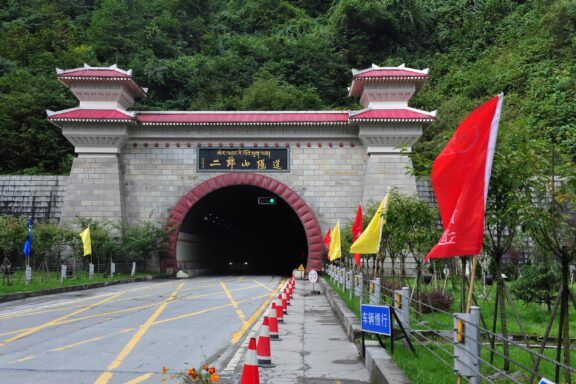
There have been two tunnels opened beneath Mount Erlang, the most recent of which was fully constructed in 2018 and is 13.43 kilometers long, making it the 11th-longest road tunnel in the world.
The previous Mount Erlang tunnel was opened in 1999 and was built to improve travel times and replace a dangerous section of the highway.
The new Mount Erlang Tunnel, called the Erlangshan extra-long tunnel, is part of the Yakang Expressway in China’s Sichuan Province and connects with the Xingkang Bridge at its western end.
6. Yamate Tunnel
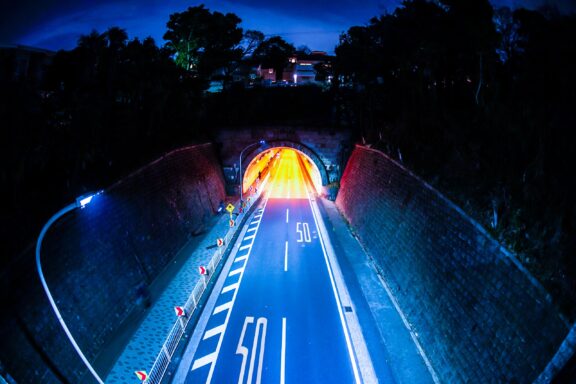
The Yamate Tunnel in Japan is the second-longest road tunnel in the world and the longest in Japan. Construction of the tunnel began in 1992, but the entire tunnel was not opened until 2015. It is 18.2 kilometers long and lies 30 meters below the surface.
The tunnel is part of the Shuto Expressway, carrying the Central Circular Route that serves the central part of the Greater Tokyo Area. Some of the many safety features of the tunnel include emergency exits, emergency telephones, cameras, and fire-safety equipment such as extinguishers, foam sprayers, and alarms.
7. Zhongnanshan Tunnel
This is the longest road tunnel in China, located in the country’s Shaanxi Province and running 18.04 kilometers. It is the third-longest road tunnel in the world.
Running under Zhongnan Mountain, the tunnel connects the Changan and Zhashui counties, was completed in 2007, and cost approximately $410 million to construct.
8. Ryfylke Tunnel
The Ryfylke Tunnel in Norway is the longest and deepest undersea road tunnel in the world. It connects the districts of Stavanger and Ryfylke via Norwegian National Road 13 under a section of the massive Bokna Fjord. The tunnel was constructed with one two-lane tube in each direction and can accommodate 10,000 vehicles each day.
While this is currently a world-record holder, Norway is planning to complete construction on an even deeper and longer undersea road tunnel by 2031. This new tunnel is called the Rogaland Fixed Link and will be 27 kilometers long.
9. Mount Ovit Tunnel
The world’s seventh-longest road tunnel, the Mount Ovit Tunnel was opened in 2018 and is 14.346 kilometers long. It was constructed to bypass the Ovit Pass in northeastern Turkey and connects the towns of İkizdere and İspir.
10.Xishan Tunnel
The Xishan Tunnel is a twin tube road tunnel that runs for 13.654 kilometers in the Shanxi Province of China. It is the country’s second longest road tunnel and was completed in 2012.
11. Hongtiguan Tunnel
This tunnel in China’s Shanxi Province is 13.122 kilometers long and was built to bypass the very dangerous Old Hongtiguan Tunnel Road. Construction was completed in 2013, and it is part of the S76 Shanxi Changzhi-Pingshun Expressway.
Longest Railway Tunnels
| Name | Location | Length | Year |
|---|---|---|---|
| Gotthard Base Tunnel | Central Swiss Alps, Switzerland | 57,104 m (35.5 mi) | 2016 |
| Seikan Tunnel | Tsugaru Strait, Japan | 53,850 m (33.5 mi) | 1988 |
| Channel Tunnel | English Channel, United Kingdom / France | 50,450 m (31.3 mi) | 1994 |
| Yulhyeon Tunnel | Seoul Capital Area, South Korea | 50,300 m (31.3 mi) | 2016 |
| Songshan Lake Tunnel | Dongguan, China | 35,391 m (22.0 mi) | 2016 |
| Lötschberg Base Tunnel | Bernese Alps, Switzerland | 34,577 m (21.5 mi) | 2007 |
| New Guanjiao Tunnel | Qinghai, China | 32,645 m (20.3 mi) | 2014 |
| Guadarrama Tunnel | Sierra de Guadarrama , Spain | 28,377 m (17.6 mi) | 2007 |
| West Qinling Tunnel | Gansu, China | 28,236 m (17.5 mi) | 2016 |
| Taihang Tunnel | Taihang Mountains , China | 27,848 m (17.3 mi) | 2007 |
1. Gotthard Base Tunnel
This tunnel through the Swiss Alps is the world’s longest railway tunnel and its deepest traffic tunnel. It runs for 57.09 kilometers and includes two tubes, totaling 151.84 kilometers of tunnel through the Alps. The tunnel is part of the New Railway Link through the Alps (NRLA), which is a project creating faster north-south travel across the Alps.
2. Seikan Tunnel
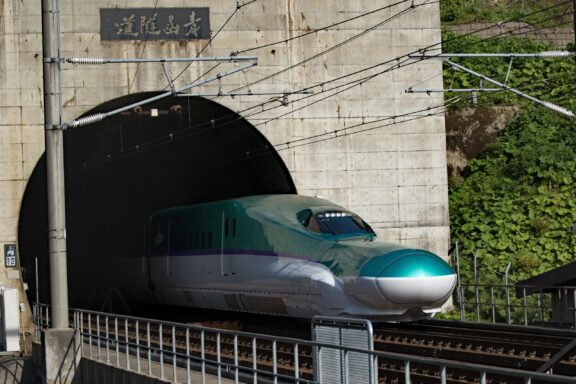
The Seikan Tunnel in Japan is the world’s longest undersea tunnel by overall length. It runs 100 meters beneath the Tsugaru Strait seabed and is 53.85 kilometers in length. It was the longest railway tunnel in the world until it was surpassed by the Gotthard Base Tunnel in 2016, and it was the deepest transport tunnel below sea level until the opening of the Ryfylke Tunnel in 2019.
3. Channel Tunnel
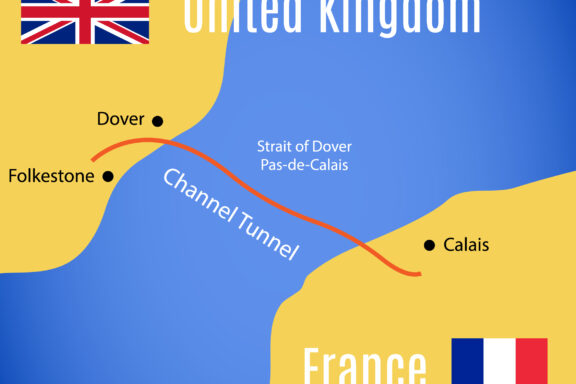
The Channel Tunnel runs from Folkestone, England to Coquelles, France under the English Channel. It is the only fixed link between Great Britain and the European mainland. The tunnel was completed in 1994, is 50.45 kilometers long, and cost £9 billion to build.
This tunnel, also sometimes referred to as the “Chunnel,” is the third-longest railway tunnel in the world and has the longest undersea section of any transportation tunnel. The tunnel carries passenger trains, freight trains, and a shuttle train for road vehicles.
4. Yulhyeon Tunnel
At 50.3 kilometers, the Yulhyeon Tunnel in South Korea is currently the world’s fourth-longest railway tunnel. It was completed at the end of 2016 and connects Suseo Station in southeastern Seoul with the Gyeongbu high-speed railway. The tunnel was designed for maximum speeds of 300 km/h.
5. Songshan Lake Tunnel
The Songhan Lake Tunnel is the longest railway tunnel in China. It runs for 35.391 kilometers through the country’s Dongguan Province and was completed in 2016.
6. Lötschberg Base Tunnel
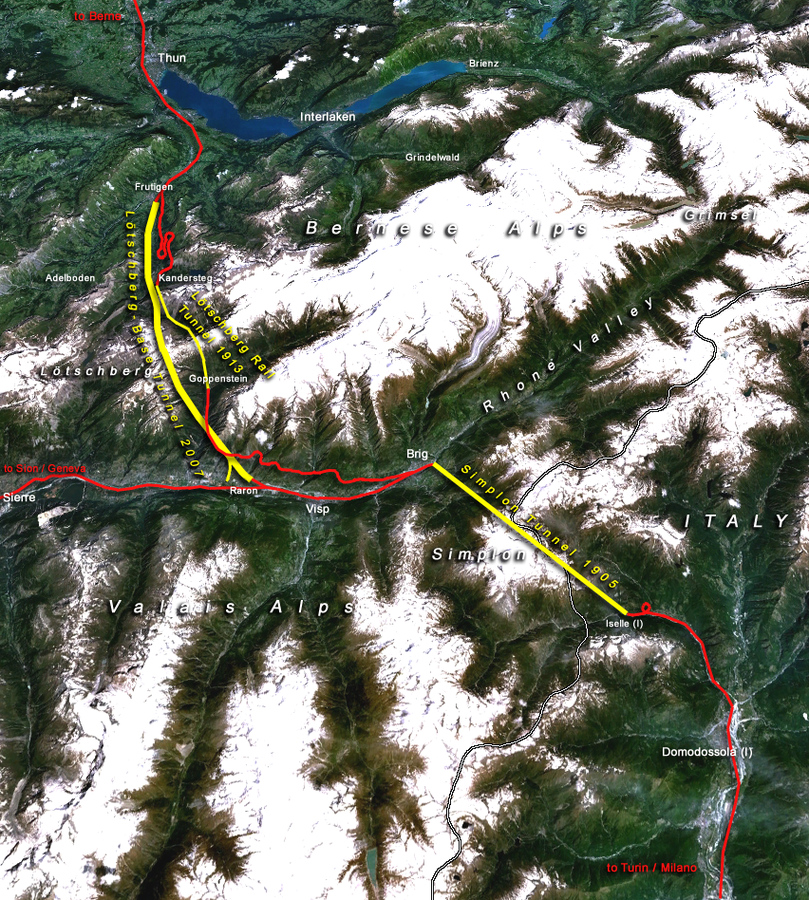
Traveling through the Bernese Alps in Switzerland, the Lötschberg Base Tunnel (LBT) is 34.57 kilometers long. Construction on this tunnel began in 1999, and the first trains ran on the railway in 2007.
This tunnel was built as part of the NRLA to ease rail transportation across the Alps and connects Frutigen, Berne, and Raron, Valais. Regular freight trains can travel at 100 km/h through the tunnel, and tilting passenger trains can travel at up to 250 km/h.
7. New Guanjiao Tunnel
The New Guanjiao Tunnel is part of the Qinghai–Tibet Railway and runs through Guanjiao Mountain in the Qinghai Province of China. Construction of the tunnel began in 2004, and it was officially opened in April 2014.
At 32.645 kilometers long, this was the longest underground railway tunnel in China until 2016, when it was displaced by the Songshan Lake Tunnel.
8. Guadarrama Tunnel
The Guadarrama Tunnel is the largest tunnel in Spain, running 28.407 kilometers in length. It crosses the Sierra de Guadarrama mountain range in central Spain.
The tunnel consists of two parallel tubes, each over 28 kilometers long, and they are mostly used by AVE high-speed passenger trains. The trains that use this tunnel travel at speeds of up to 350 km/h, and the tunnel facilitates travel from the country’s capital to the north and northwestern region of the country.
9. West Qinling Tunnel
The West Qingling Tunnel is in a central portion of the Chongqing–Lanzhou Railway that crosses the Qin Mountains. It is in the landlocked northwestern Chinese province of Gansu and is 28.236 kilometers long. Construction of the tunnel began in 2008, and it was officially opened at the end of 2016.
10. Taihang Tunnel
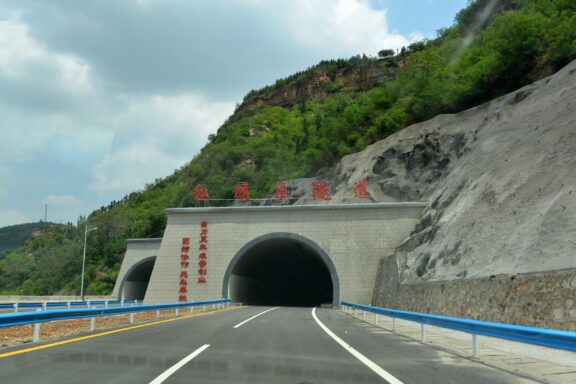
This double-track, single-tube tunnel is the third-longest mountain railway tunnel in northern China. It is 27.839 kilometers long and allows the Shijiazhuang–Taiyuan high-speed railway to cross the Taihang Mountains.
The tunnel opened officially in 2007 and is responsible for dramatically improving the connection between two provincial capitals: Shijiazhuang in Hebei and Taiyuan in Shanxi. The travel time between these two cities has been reduced to one hour from six hours.
Image Sources and Copyright Information
- Illuminated Tunnel Entrance at Night: © Makoto_Honda/Shutterstock